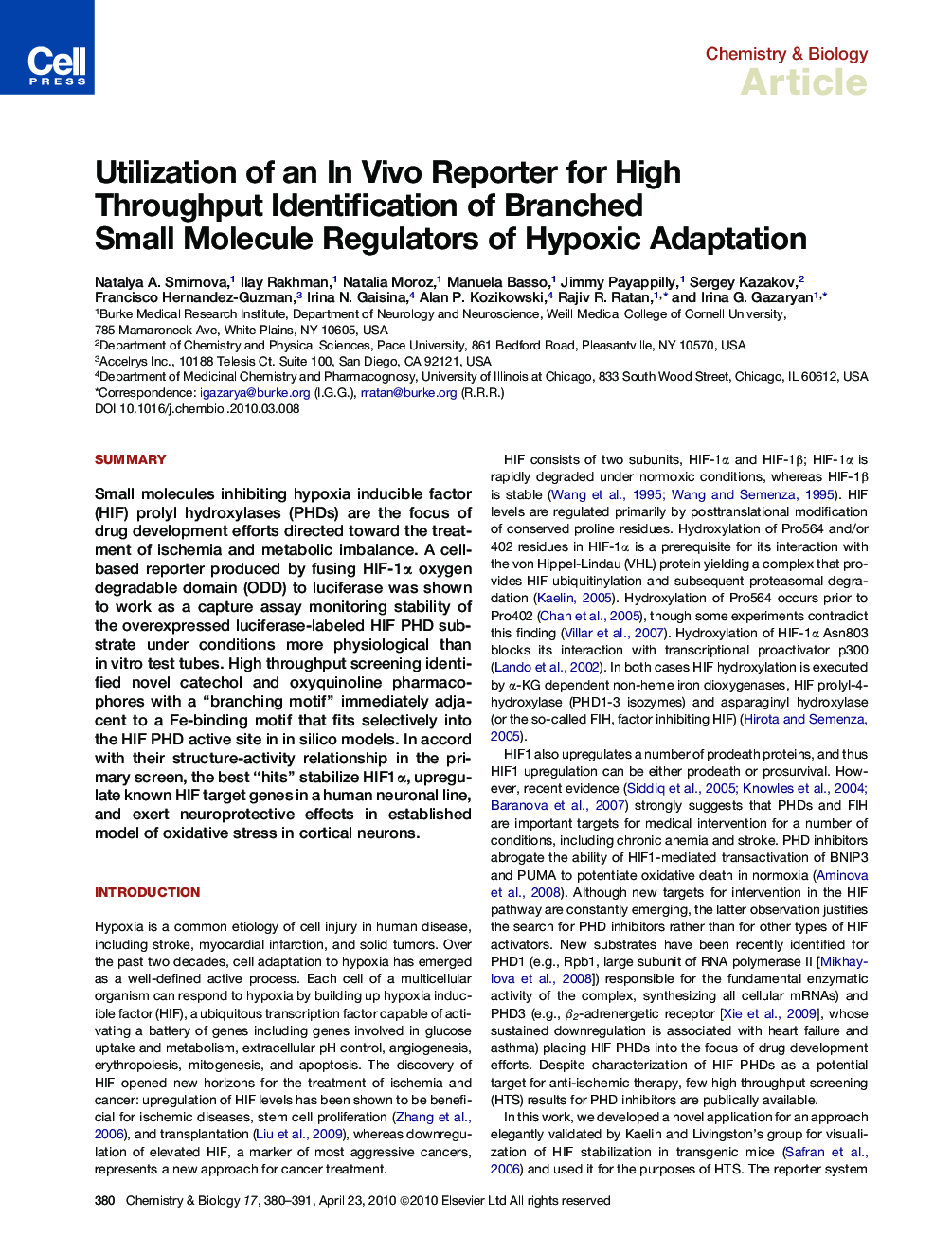| Article ID | Journal | Published Year | Pages | File Type |
|---|---|---|---|---|
| 1392538 | Chemistry & Biology | 2010 | 12 Pages |
SummarySmall molecules inhibiting hypoxia inducible factor (HIF) prolyl hydroxylases (PHDs) are the focus of drug development efforts directed toward the treatment of ischemia and metabolic imbalance. A cell-based reporter produced by fusing HIF-1α oxygen degradable domain (ODD) to luciferase was shown to work as a capture assay monitoring stability of the overexpressed luciferase-labeled HIF PHD substrate under conditions more physiological than in vitro test tubes. High throughput screening identified novel catechol and oxyquinoline pharmacophores with a “branching motif” immediately adjacent to a Fe-binding motif that fits selectively into the HIF PHD active site in in silico models. In accord with their structure-activity relationship in the primary screen, the best “hits” stabilize HIF1α, upregulate known HIF target genes in a human neuronal line, and exert neuroprotective effects in established model of oxidative stress in cortical neurons.
Graphical AbstractFigure optionsDownload full-size imageDownload high-quality image (306 K)Download as PowerPoint slideHighlights► HIF1 ODD-luciferase fusion protein designed for in vivo imaging has been used for HTS ► Mutations analysis validates the reporter as a surrogate for endogenous HIF stability ► HTS of 85,000 compounds identified novel small molecule inhibitors of HIF PHDs ► New branched HIF PHD inhibitors are neuroprotective in oxidative stress model
